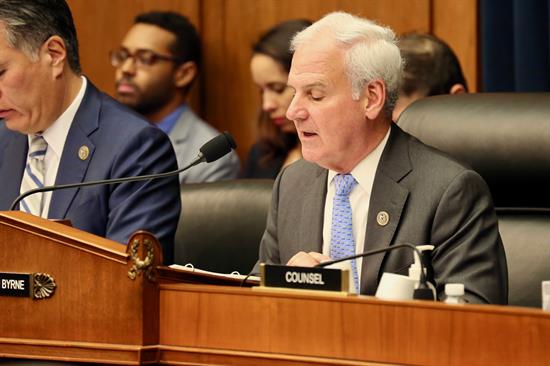Good morning, and I welcome our witnesses and members to today’s subcommittee hearing to examine the effectiveness of the Occupational Safety and Health Administration (OSHA). Today’s hearing will focus on how OSHA is ensuring safe workplaces and promoting smart, responsible regulatory policies for both employees and employers.
No matter the size of the business, the number of workers it employs, or the industry it supports, workplace safety is the responsibility and should be a chief priority of all businesses. Every worker deserves a safe and healthy workplace.
OSHA plays a key role in helping workers and employers make workplaces safe through its health and safety standards, guidelines, education, assistance, and outreach. The agency’s policies cover approximately 130 million workers at more than 8 million worksites. Its reach encompasses private sector employers and workers in all 50 states.
As a former labor attorney, I know these policies all too well and understand the vast jurisdiction OSHA has over the workforce.
While OSHA has standards that provide employees with workplace protections across many industries, employers are continuously struggling to comply with the ever-changing standards and new regulations released by OSHA every year.
I have heard from countless employers and business owners who have told me about the challenges they face in complying with OSHA’s policies. While these employers agree that OSHA strives to create what it views as the safest working environments for employees, it is often hard for businesses of all sizes to stay in compliance with OSHA standards. Many businesses also agree that OSHA’s intentions are well-meaning, but are unworkable in the real world.
Furthermore, continuous change comes at a cost to many businesses as they must adjust operations to meet the new standards. These compliance costs are especially difficult for small businesses who have limited resources to meet new, burdensome OSHA standards. The added compliance costs are often passed on to consumers in the form of higher prices.
That said, there are programs at OSHA designed to help businesses of all sizes in a proactive way. Just last week, I visited the Cintas location in Mobile, Alabama to celebrate their designation as an OSHA Voluntary Protection Program Star site. I continue to applaud the local employees for their commitment to workplace safety, and I look forward to hearing more about the VPP and other collaborative programs offered by OSHA.
Today’s hearing will focus on how OSHA can work more cooperatively with job creators, especially in the small businesses community, to expand its compliance assistance efforts and for employers to provide the safest and healthiest workplaces possible.
We also need to see strong and stable leadership within the agency, and I hope the Senate will move quickly on the confirmation of Scott Mungo to be the new assistant secretary at the Department of Labor, charged with leading OSHA.
We are holding this hearing today because it is important for business owners and legislators to hear from one another as new policies are created to foster a safer and healthier workplace for the 21st Century economy.
It is my hope that the conversations we have today will ultimately benefit workers and employees, who are the most valuable resource of every business.
I look forward to hearing from our witnesses who have come from various industries, and I thank them for their participation in today’s hearing.
To read the PDF version, click here.
# # #

